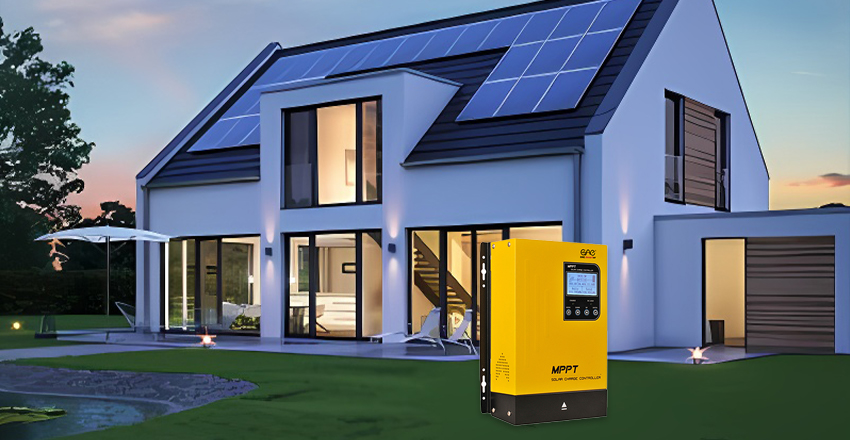This is the heart ofany contemporary solar power systemAbout anygrid-tied solar inverter This enables domestic, business and even mega solar farms to generateclean, renewable energy to stay connected to the utility grid. A grid-tied solar inverter does more work than just converting the direct current power produced by your solar panels into alternating current (the type of power your home or business operates on). It is then integrated with the health grid, so it flows energy smooth. Here’s how they get this kind of seamless connection to work:

The most important role of a grid-interfaced solar inverter upfront tag to this as a Point of Entry converting the direct current (DC) electricity from the cost electricity produced by the from the solar panels to alternating current (AC) electricity. Most homes and businesses operate on AC power, so the conversion, is necessary for the power to be utilized by home appliances or fed in to the grid.
Grid tied inverters are designed to synchronize precisely to the voltage, frequency and waveform of the AC grid. This helps in conditioning the energy produced by your solar panels so it’s in accordance with what goes out on the grid and protects the grid from any complications when the energy flows back into the grid after getting conditioned. The inverter ensures that the current your solar panels generate can be consumed for your own use and/or exported onto the grid for others to use!
The grid tied solar inverter must synchronize the frequency and phase of its output to that of the utility grid at all time. Grid works on generation frequency which is either 50Hz or 60Hz based on the region. A grid-synchronous inverter is one where the output is synchronous with the power grid itself; the inverter will generate electricity when the grid is generating electricity and will not when the grid isn’t.
The synchronization of phase and frequency of grid-tied inverters is achieved via a synchronization system, ensuring that the generated power is phase- and frequency-matched to the grid. This enables seamless energy exchange and ensures electricity flows back into the grid smoothly. As the grid goes up and down, the inverter regulates its output to adjust the inflow of power, delivering a consistent, steady energy flow.
Bidirectional power flow is one of the many advantages of grid-tied solar inverters. That enables energy to flow from your solar panels to the grid, and from the grid to your home, depending on demand and solar energy generation. When your solar panels are generating too much power during the day, this can go back into the grid. In exchange, at night or on cloudy days when solar power generation is minimal, electricity can be obtained from the grid.
This two-way exchange of energy is vital to ensuring you’re not left resource constrained whenever your solar system isn’t producing enough. And many regions offer net metering, which allows homeowners to get credit for any power they send back to the grid. You can offset the amount of electricity you consume from the grid using this which helps to reduce your electricity bill
Certain grid-tiedinverters could have a lot of more in water bottle, called anti-islanding protecer. When the grid tied solar inverter still supplies energy without connecting to the greater part of the grid, it is called “island,” when part of the grid disconnects from the remaining part of the grid.
Island conditions can be dangerous because maintenance workers might not know that the area is de-energized, which can put them in danger. So, in such situations, if there will be any grid disturbances or power outages, the inverter will automatically switch off from the grid, thanks to the anti-islanding protection. This protects against dangerous conditions by preventing power from feeding back into the solar system and the utility grid; when conditions are unsafe, no energy can be sent back to the grid.
Most grid-tied solar inverters offered today come equipped with monitoring features that provide real-time usage, generation, and performance data to homeowners and system operators. Most systems have features that allow you to monitor the power and production of solar power systems remotely or from a smartphone or computer.
These show how much energy has been generated, consumed, and exported to the grid, in real time. They also provide alerts and diagnostics that will inform you if there are concerns with the inverter or solar system, allowing for rapid troubleshooting and helping make sure the system is operating at peak efficiency.
Additional features included on these inverters are a Maximum Power Point Tracking, or MPPT, which is a specialized technology that maximizes the energy output of the solar panels. The inverter works using MPPT to always operate at the peak power obtained from the solar panel by adjusting voltage and current to maximize energy production.
If you are having solar energy system connected to the grid then grid-tied solar inverters are the backbone of such systems. The devices, also referred to as power electronics circuits, help to optimize the conversion of solar energy, synchronize it to the grid, and inject it safely into the system when necessary. Advanced features like MPPT, bidirectional power flow, and anti-islanding protection enable these inverters to work harmoniously with the electrical grid, ensuring that users derive the maximum advantage from solar energy without any disruptions to the grid. Whether you want lower energy bills, to help the environment or want energy independence, a grid-tied solar inverter is what will help you make the most of your solar energy system.